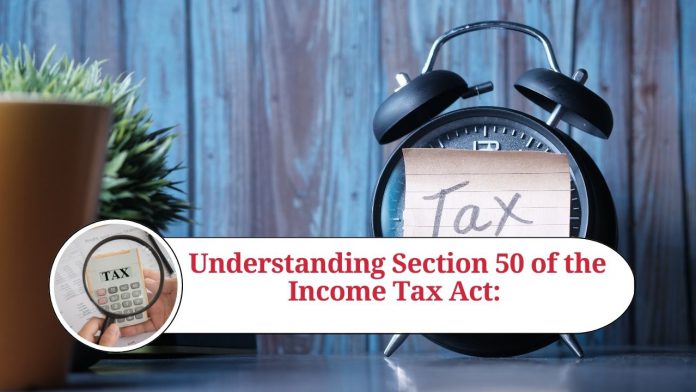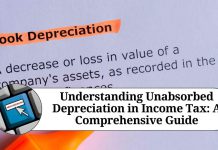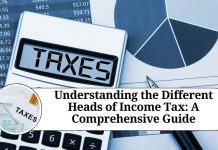Section 50 of the Income Tax Act, 1961 is a provision that deals with the computation of capital gains in case of depreciable assets. A depreciable asset is an asset used for business purposes that decreases in value over time due to wear and tear, obsolescence, or other factors.
Treatment of Capital Gains under Section 50
Section 50 provides for the treatment of the difference between the sale consideration and the written down value (WDV) of the depreciable asset as short-term capital gains. The WDV is the cost of the asset minus the depreciation claimed to date.
Calculation of Capital Gains under Section 50
The capital gains under Section 50 are calculated as follows:
Short-term capital gains = Sale consideration – Written down value (WDV)
For example, if a business had purchased machinery worth Rs. 10 lakhs and claimed depreciation of Rs. 7 lakhs till the time of sale. The machinery is sold for Rs. 9 lakhs after 5 years. In this case, the WDV of the machinery would be Rs. 3 lakhs (i.e., Rs. 10 lakhs – Rs. 7 lakhs). Therefore, the short-term capital gains would be Rs. 6 lakhs (i.e., Rs. 9 lakhs – Rs. 3 lakhs).
Applicability of Section 50
The provisions of Section 50 are applicable only when the depreciable asset is sold for a price higher than its WDV. In case the asset is sold for a price lower than its WDV, the difference would be treated as a business loss.
Reacquisition of Assets
Section 50 also provides for the computation of capital gains in case of assets that are reacquired within a specified period. If a depreciable asset is sold and reacquired within 3 years, the cost of acquisition to compute capital gains would be reduced by the amount of depreciation allowed in the earlier years.
For example, if a business had sold machinery for Rs. 9 lakhs, with a WDV of Rs. 3 lakhs, and then reacquired it within 3 years for Rs. 8 lakhs. The cost of acquisition to compute capital gains would be reduced by the amount of depreciation allowed in the earlier years, which in this case is Rs. 7 lakhs. Therefore, the cost of acquisition to compute capital gains would be Rs. 1 lakh (i.e., Rs. 8 lakhs – Rs. 7 lakhs).
Final Conclusion
In conclusion, Section 50 of the Income Tax Act is an essential provision that deals with the computation of capital gains in the case of depreciable assets. Businesses and taxpayers must understand the provisions of this section to ensure proper compliance with the tax laws. The reacquisition provisions under Section 50 are particularly useful for businesses that frequently buy and sell depreciable assets.
Read more useful content:
Frequently asked questions related to Section 50 of the Income Tax Act.
Q: What is a depreciable asset?
A: A depreciable asset is an asset used for business purposes that decreases in value over time due to wear and tear, obsolescence, or other factors. Examples of depreciable assets include machinery, equipment, vehicles, and buildings used for business purposes.
Q: What is the written down value (WDV) of a depreciable asset?
A: The written down value (WDV) of a depreciable asset is the cost of the asset minus the depreciation claimed to date. It is the value of the asset after accounting for the depreciation claimed on it over time.
Q: What is the treatment of capital gains under Section 50?
A: Section 50 provides for the treatment of the difference between the sale consideration and the written down value (WDV) of the depreciable asset as short-term capital gains.
Q: When does Section 50 apply?
A: The provisions of Section 50 are applicable only when the depreciable asset is sold for a price higher than its WDV. In case the asset is sold for a price lower than its WDV, the difference would be treated as a business loss.
Q: What is the period of reacquisition of assets under Section 50?
A: If a depreciable asset is sold and reacquired within 3 years, the cost of acquisition to compute capital gains would be reduced by the amount of depreciation allowed in the earlier years.
Q: What is the impact of Section 50 on businesses that frequently buy and sell depreciable assets?
A: The reacquisition provisions under Section 50 are particularly useful for businesses that frequently buy and sell depreciable assets, as they can reduce the cost of acquisition for computing capital gains. This can result in lower tax liability for such businesses.




















